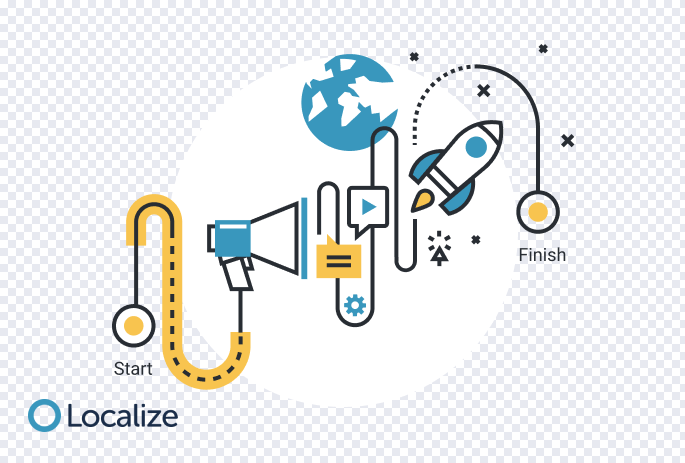Localization is not just about translating your content into different languages. It also incorporates local customs, culture, beliefs, and traditions. Your content should mirror how your target audience talks, thinks, and acts.
Localization teams must review many things – text, screenshots, graphics, images, symbols, colors, photographs, numbers, date formats, time zones, locations – and local history.
Here’s how you can use local history to your advantage to create effective campaigns in global markets.
Top 6 Tips for Culturally Appropriate Localization
Culturally appropriate localization is about understanding what the local target market relates to and what might offend them. Localization is not just about translating a website to a local language. It’s also about adapting the content to the target culture. Cultures vary from one location to another. Most of the time, the local history of the place has a big role in their culture. Understanding the local history of your audience can be a big step in creating a localized website that checks all the right boxes.
Here are 6 tips for culturally appropriate localization.
1) Avoid Inappropriate Content
Many countries in the global market have very difficult histories. Countries that were torn apart by war, racism, extreme poverty, or political unrest, might appreciate images of a soldier as a hero. Some countries have suffered terrible atrocities at the hands of others, so depicting cultures and festivals associated with those cultures might hit a sore spot. Before assuming that your content has a universal appeal, it is always better to do a bit of research. Understanding history is important for marketing to a specific region.
For example, think about localizing for Japan. What if a company had a name or tagline that said ‘Boom!’ and their logo was a big explosion like a mushroom cloud? That particular logo will very likely not amuse a Japanese audience. The country suffered terrible devastation after the attacks on Nagasaki and Hiroshima.
Here are some other examples of content that’s inappropriate in some cultures:
-
- In Arabic culture, women generally cover their hair. A website featuring a woman with short, uncovered hair or a ponytail may be regarded as offensive.
- Depicting gourmet food images in certain local markets can be problematic. Consider different areas that have been struggling with supply chain challenges or poverty.
- Campaigns that support racial diversity shouldn’t primarily focus on non-minorities. In 2017, Pepsi had to pull a commercial featuring Kendall Jenner after viewers complained that it trivialized racial struggles in the US.
2) Leverage Positive Events and Holidays
Many countries in the international market have positive historic events that they consider with a sense of pride. Understanding these positive events in history can help a marketing campaign.
Just like the United States, several countries around the globe celebrate their independence day. Big holidays like Independence Day, Diwali, Hanuka, and Ramadan offer great marketing opportunities.
3) Pay Attention to Flags
When you think about globalization and internationalization, images of flags might come to mind. However, flags should be used carefully. Flags and their colors and symbols carry significant meaning in many countries. For example, a flag may denote a long and painful struggle for freedom from colonization.
Depending on the culture, it could be either offensive or acceptable to use a national flag in branding or packaging. In some cases, using national flags can ruin your campaign. In 2001, the U.S. Postal Service had to get rid of thousands of brochures because they featured the communist Vietnamese flag. This was offensive to Vietnamese-American immigrants who had suffered under the oppressive communist regime.
4) Be Careful with Slogans and Taglines
The use of certain words can also be disrespectful to local history. For instance, Nivea had to pull its deodorant ad that declared White Is Purity after hundreds of Americans protested that the slogan was racist.
Translation can also alter the meaning of slogans, taglines, or product names. For some examples of slogans and taglines that missed the mark in different locales, read our article on the Top 10 Cringe-worthy Translation Mistakes of All Time.
5) Be Mindful of War History
In many countries with painful war histories, it’s important to be respectful to your audience. Here are a few examples:
-
- In India, it would be offensive to showcase anything denoting the supremacy of the British over the natives because of the country’s long struggle for independence from Britain.
- Some groups may have suffered due to atrocities from other cultures. Showcasing the latter as heroes will evoke strong emotions.
- When translating content for a local audience, think about why you’re using a particular language. Is it because the country has a history of colonization? In some cases, native target languages will be a better fit than European languages like British English, Spanish, Portuguese, or French.
6) Hire Local Collaborators
When you hire the right people for your localization project, you can avoid making costly translation mistakes. Instead of relying on machine translation or free plugins, it’s best to hire a professional translator to translate important websites, apps, software, and products for your brand.
Why? Because nobody can understand nuance and context better than humans with lived experience. Local translators and in-country reviewers (ICRs) have a good understanding of region-specific sensitivities in the local culture. A diverse localization team will provide the best quality assurance for your projects.
Manage Culturally Appropriate Translations with Localize
The success of localization teams depends on having in-depth and relevant cultural knowledge. Localize has helped 700+ companies overcome complex challenges in translation and localization.
We provide cutting-edge localization tools which enable highly streamlined translation services optimized for web, mobile, back-end, and file-based content. Our tools integrate with premier language service providers like Gengo, Textmaster, DeepL, Google Translate, and Microsoft Translate.
Localize gives you effective communication with your target audience, an enhanced user experience, and a great bottom line. Contact us today to see how we can transform your localization process.







